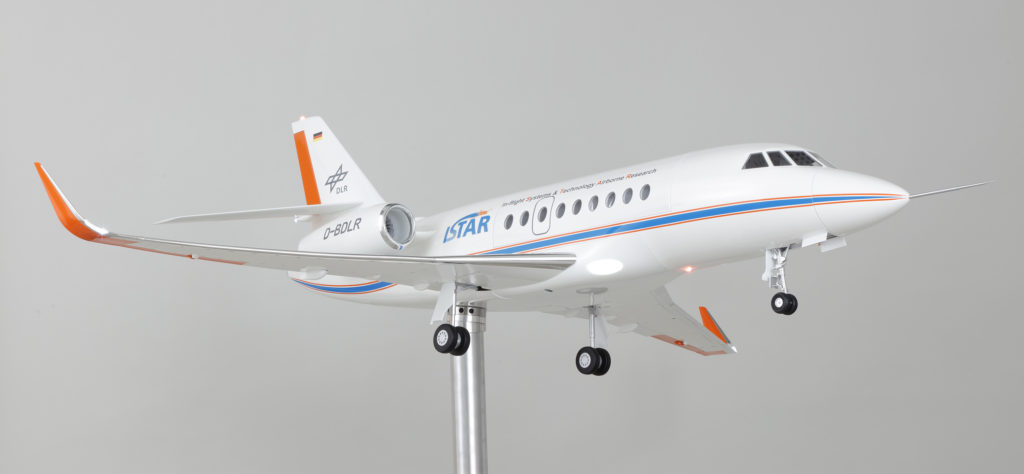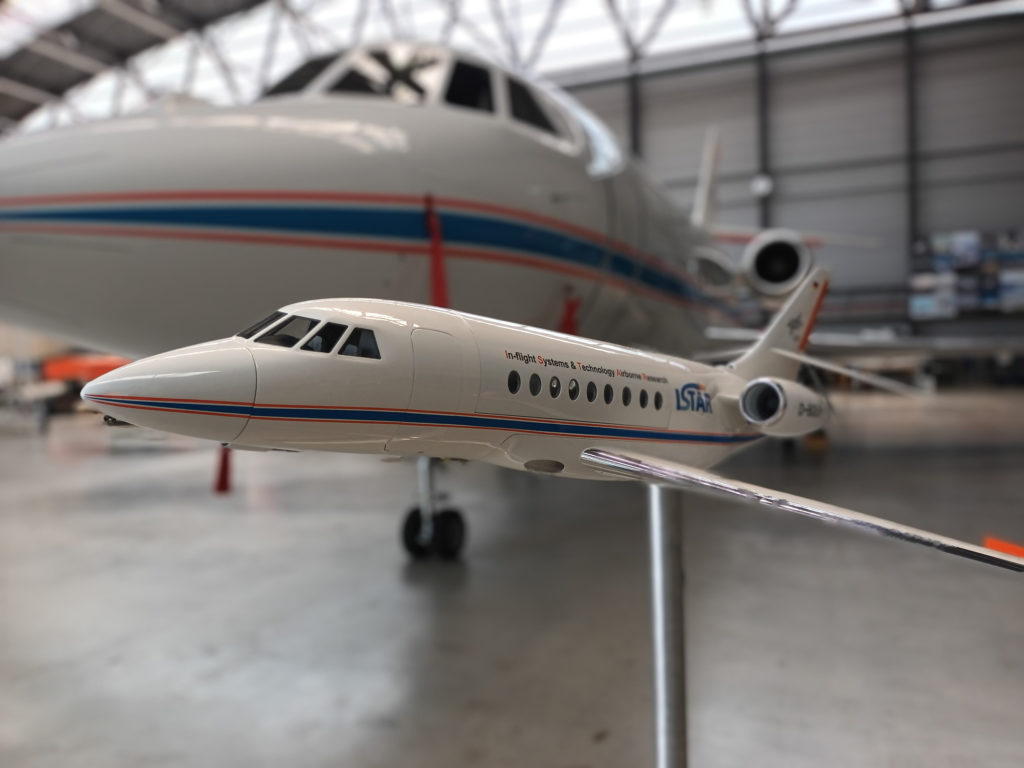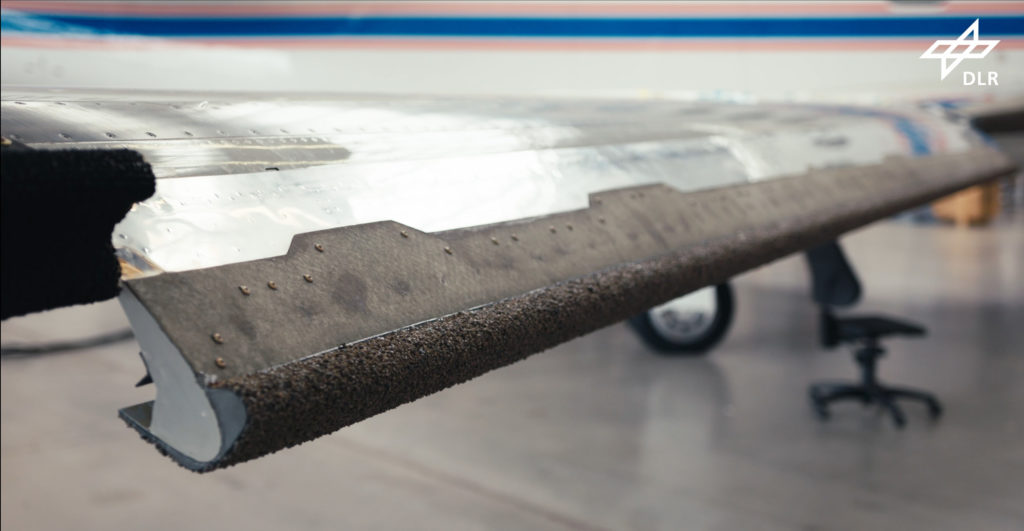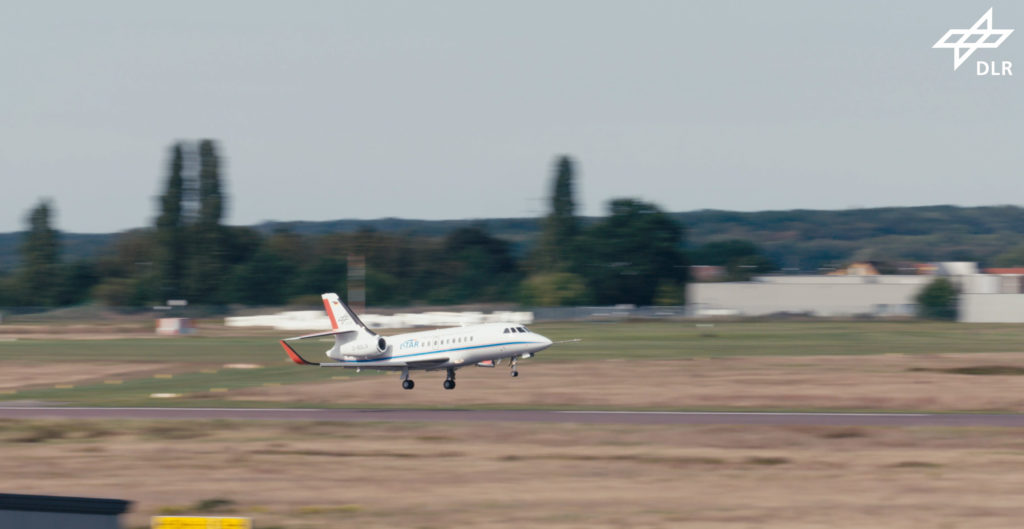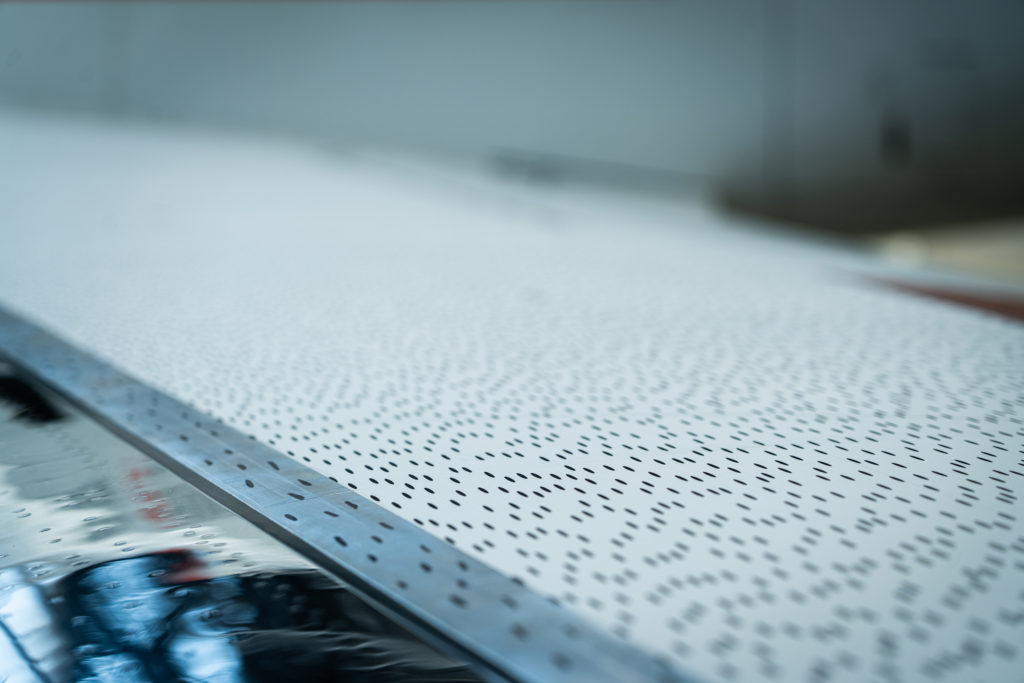Representative, detailed replica of DLR’s In-flight Systems & Technology Airborne Research (ISTAR) aircraft
The ISTAR Dassault Falcon 2000LX is an in-flight simulator that will enable a major step towards the digitalisation of aviation. This is thanks to the creation of a digital twin that will accompany the aircraft throughout its entire ‘life’. To illustrate the diversity of research offered by this flying test platform, a detailed 1:13.6 scale model was created that allows individual parts to be modified and moved.
The configuration on display at the ILA 2024 illustrates research work from the DLR HighFly project (HighFly – High speed in-flight validation), which was used to ‘fly in’ the real ISTAR and determine its parameters. Sensors can be seen on the wings, which measured flow fields and wing loads up to the very limits of flight capability. A dotted film was applied to one wing to determine how the flow on the wings changes during flight manoeuvres and the extent to which the wings deform in flight. When the wings bend during flight, cameras record the change in position of the dots. This is how the local deformation of the wing is determined. New MEMS-based sensors are distributed on and under the other wing, which have measured pressure and deformation data in the transonic speed range for the first time. DLR is using the results to further develop ISTAR’s digital twin and contribute to making aircraft designs even more energy-efficient.
Artificial ice accumulations can also be seen on the model. The background: New aircraft must also demonstrate safe flight behaviour under icing conditions. This applies across the board – even if the anti-icing systems fail. As part of the EU aviation research programme Clean Sky 2, DLR and Dassault Aviation conducted flight tests with the ISTAR, with the aim of investigating changes in flight behaviour and airflow data with the artificially iced areas.
Link:
German Aerospace Center (DLR)
Institute of Aerodynamics and Flow Technology
E-Mail contact-dlr@DLR.de
